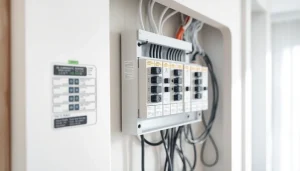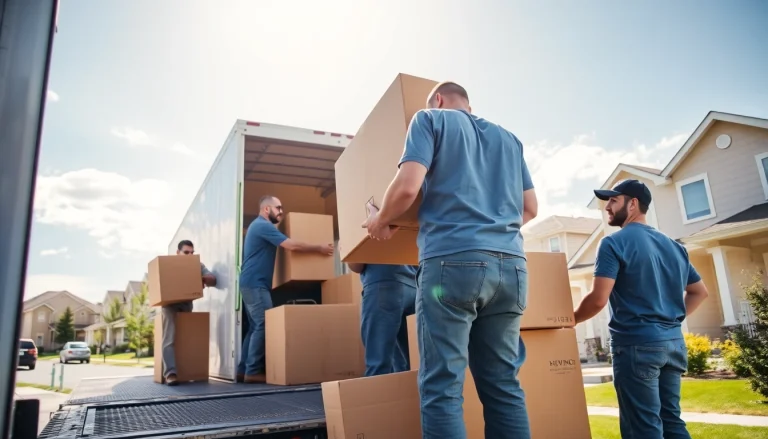Understanding the Basics of Insurance Roofing Claims
As a homeowner, navigating the complexities of roofing issues and insurance claims can be a daunting experience. Understanding the fundamentals of insurance roofing claims help is essential in ensuring that you can effectively manage the situation when damage occurs. This comprehensive guide will walk you through what an insurance roofing claim is, when it should be filed, and key terminologies that will assist you in this process.
What is an Insurance Roofing Claim?
An insurance roofing claim is a formal request made by a homeowner to their insurance company for compensation for roof damage due to covered perils such as natural disasters, vandalism, or other incidents. When damage occurs, homeowners often turn to their insurance coverage to help offset the considerable costs associated with repairs or total replacement. Understanding how this process works can prevent any potential pitfalls and ensure you receive the full benefits of your policy.
When Should You File a Claim?
Determining the right moment to file a claim is crucial. Generally, a claim should be filed when the damage to the roof is significant enough to warrant professional repairs. Signs such as leaks, missing shingles, or structural issues can be indicators. It’s important to consider the following factors before filing:
- Severity of Damage: If the damage can be classified as extensive, such as storm-related damage, even if it does not appear significant externally, you should consider filing a claim.
- Cost of Repairs: If the out-of-pocket costs for repairs exceed your deductible, it would be wise to proceed with the claim.
- Policy Limitations: Always check your policy for specific details on what is covered, and assess whether the type of damage you’ve sustained is included.
Key Terms to Know Before Filing
Familiarizing yourself with some key terms related to insurance roofing claims can greatly assist you during the claims process:
- Deductible: The amount you are required to pay out-of-pocket before your insurance covers the rest.
- Actual Cash Value (ACV): The depreciated value of the damaged roof, i.e., the cost to repair or replace minus depreciation.
- Replacement Cost Value (RCV): The cost to replace the roof without deducting for depreciation.
- Claim Adjuster: A representative from the insurance company who investigates the claim and determines the amount to be paid out.
Steps to Filing an Insurance Roofing Claim
Filing a roofing claim involves several critical steps that can significantly affect the outcome. Below is a detailed breakdown of these key stages.
Documenting Damage Effectively
Proper documentation is vital to support your claim. When you discover roof damage, begin by taking clear photographs of the affected areas. Consider the following practices:
- Detailed Photos: Capture images from different angles and distances to show the context of the damage.
- Video Evidence: Record a video walkthrough of the damage to provide a comprehensive view.
- Professional Assessment: If possible, obtain a written report from a qualified roofing contractor detailing the damage and recommended repairs.
How to Contact Your Insurance Provider
Once you have documented the damage, the next step is to reach out to your insurance provider. Here’s how you can do it effectively:
- Gather Policy Information: Before calling, have your policy number and relevant details readily available.
- Prepare to Explain: Be prepared to clearly explain the nature of the damage and how it occurred.
- Know Your Rights: Familiarize yourself with the specifics of your policy, including what is covered and the claims process.
The Role of Adjusters in the Claims Process
After filing your claim, an insurance adjuster will be assigned to your case. Their role is to evaluate the damage and determine the compensation amount based on your policy coverage. To ensure a smooth evaluation:
- Schedule an Inspection: Coordinate a date and time that works for both you and the adjuster to inspect the damage.
- Provide Access: Ensure that the adjuster has full access to all damaged areas and any related documentation.
- Be Honest: Provide truthful information regarding the damage to avoid complications later on.
Common Challenges in Insurance Roofing Claims
Despite doing everything right, homeowners may encounter challenges when processing roof insurance claims. Being aware of potential issues can prepare you for a smoother claims process.
Dealing with Claim Denials
One of the most frustrating encounters is when a claim is denied. Common reasons for denials include:
- Insufficient Evidence: If the documentation you provided does not conclusively demonstrate the extent of the damage.
- Policy Exclusions: Damage caused by issues not covered under your policy, such as wear and tear or undetected leaks, may be grounds for denial.
- Improper Filing: Incomplete forms or failure to meet deadlines can result in claims being rejected.
Understanding Your Deductible and Coverage Limitations
Keenly understanding your deductible and the limits of your policy is essential. If a claim’s value does not surpass your deductible, it might not make financial sense to file. Additionally:
- Frequency of Claims: Excessive claims can risk raising your premiums or being dropped by your provider.
- Coverage Limits: Know how much your insurance will pay per claim and if there’s a cap on your total policy limits.
How to Handle Multiple Claims
Filing multiple claims over a short period may complicate your insurance standing. Strategies to manage multiple claims include:
- Assess Cumulative Damage: Take a holistic view of your situation and prioritize filing claims for the most severe damage.
- Space Out Claims: If possible, avoid filing multiple claims too closely together. This may reduce the risk of heightening premiums or facing scrutiny from insurers.
- Consult a Specialist: Seek guidance from a qualified roofing claims expert to determine the best course of action.
Best Practices to Ensure Successful Claims
Executing best practices when filing roof insurance claims can enhance your chances of a favorable outcome. Here are some recommended strategies:
Gathering Necessary Documentation
Robust documentation increases claim approval chances. Ensure the following items are ready:
- Photos and Videos: As previously mentioned, visuals strengthen your case.
- Receipts and Estimates: Keep records of all repair estimates and receipts if repairs were made prior to the claim approval.
- Communication Logs: Document every conversation with your insurance broker or adjuster, noting dates, times, and key details discussed.
Communicating Clearly with Your Insurance Company
Clear communication can prevent misunderstandings. Here are some tips:
- Be Concise: Clearly articulate your situation without unnecessary details.
- Follow Up: Check back regularly with your insurance provider to monitor the claim status and provide any additional requested information timeously.
Negotiating with Insurance Adjusters
As an advocate for your claim, negotiation skills can be vital in the interactions with insurance adjusters. To negotiate effectively:
- Know Your Worth: Familiarize yourself with common costs associated with roof repairs in your area.
- Stay Firm but Polite: Assert your position respecting the adjuster’s role and perspectives, creating a conducive negotiation environment.
Future Considerations for Homeowners
After addressing a current roofing claim, it’s prudent for homeowners to consider future factors to mitigate claims risks so that they can protect their investments alive and well.
Frequently Asked Questions About Roofing Insurance Claims
As you work through the claims process, you may have questions. Here are some common inquiries:
- How long do I have to file a claim? Generally, you have a finite window—often one to two years—depending on state regulations and your policy terms.
- Will my premium increase if I file a claim? There is a possibility that your premiums could rise after filing a claim, especially if you file multiple claims within a short timeframe.
How to Prevent Future Damage and Claims
To avoid future claims, consider the following proactive measures:
- Regular Inspections: Schedule periodic evaluations of your roof to catch issues early.
- Maintenance Practices: Keep gutters clean and free of debris and make necessary repairs promptly to maintain the roof’s integrity.
Understanding Homeowner Insurance Policy Updates
Insurance policies can change and may include new exclusions or coverage limits. Regularly reviewing your policy will help you stay informed of your coverage, keeping you prepared for any event.






















+ There are no comments
Add yours